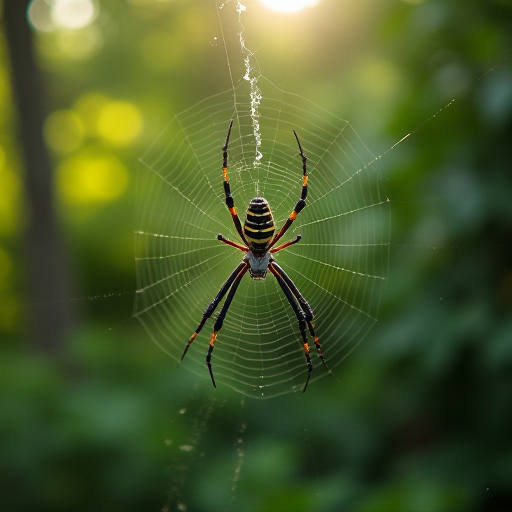
Why Do Spiders Spin Webs?
Spiders are fascinating creatures that have intrigued humans for centuries. One of their most notable behaviors is the spinning of webs. These intricate structures serve various purposes and are a testament to the remarkable abilities of these arachnids. In this article, we will explore the reasons why spiders spin webs, the different types of webs they create, and the biological marvel behind web production.
The Purpose of Web Spinning
1. Capturing Prey
The primary reason spiders spin webs is to capture prey. Webs act as traps for unsuspecting insects, providing spiders with a reliable means of securing food. The sticky silk threads of the web are designed to entangle and immobilize prey, making it easier for spiders to approach and deliver a venomous bite. This mechanism allows spiders to conserve energy and resources, as they do not need to actively hunt their prey.
2. Habitat Construction
Some species of spiders construct webs as a form of shelter. These webs can serve as protective homes where spiders can retreat from predators and harsh environmental conditions. Certain spiders, such as the funnel-web spiders, build dense silk tunnels that provide a secure space for feeding, molting, and laying eggs.
3. Mating and Reproduction
Webs play a significant role in the reproduction process of spiders. Male spiders often use webs to communicate with potential mates. They may pluck the strings of a female's web to signal their presence or weave intricate mating webs to attract females. Additionally, female spiders sometimes construct special silk sacs to safely encase their eggs until they hatch.
4. Navigation and Movement
For some spiders, webs serve as a means of movement and navigation. Species like the orb-weaver spiders use their webs to bridge gaps and navigate their territory. By constructing webs in strategic locations, spiders can efficiently travel through their environment and expand their feeding range.
Types of Spider Webs
Different species of spiders create diverse types of webs, each suited to their specific ecological needs. Here are some common types of spider webs:
1. Orb Webs
Orb webs are the most recognizable type of spider web and are typically associated with the classic "spider web" image. These circular, spiral-shaped webs are built by orb-weaver spiders and are highly effective at capturing flying insects.
2. Funnel Webs
Funnel webs are constructed by funnel-web spiders and consist of a tubular retreat leading to a flat, sheet-like surface. These webs are often built close to the ground and are designed to lure prey into the funnel, where the spider waits in ambush.
3. Sheet Webs
Sheet webs are horizontal, flat webs that resemble a sheet stretched across vegetation. Built by sheet-weaving spiders, these webs often have a dense, non-sticky layer for the spider to walk on and a sticky layer beneath to catch prey.
4. Cobwebs
Cobwebs are irregular and tangled webs commonly found in corners of buildings or in dark, undisturbed areas. They are spun by cobweb spiders, which include the common house spider. These webs are highly adaptable and can trap a variety of small insects.
The Biological Marvel of Web Production
The ability to produce silk is one of the most extraordinary adaptations of spiders. Spider silk is a protein-based fiber produced by specialized glands within the spider's abdomen. This silk is extruded through spinnerets, small organs located at the end of the abdomen, allowing spiders to manipulate and weave it into webs.
Properties of Spider Silk
- Strength: Spider silk is incredibly strong, with some types being stronger than steel of the same diameter.
- Elasticity: The silk is highly elastic, allowing it to absorb the energy of struggling prey without breaking.
- Lightweight: Despite its strength, spider silk is extremely lightweight, making it an efficient material for web construction.
Silk Variations
Spiders can produce different types of silk for various purposes, such as:
- Dragline Silk: Used for the main structural lines of the web.
- Capture Silk: Coated with a sticky substance to trap prey.
- Egg Sac Silk: Used to encase and protect eggs.
Conclusion
Spiders spin webs for a multitude of reasons, ranging from capturing prey to constructing habitats and facilitating reproduction. The diversity of web types reflects the adaptability and ecological roles of different spider species. The production of silk is a biological marvel, showcasing the evolutionary ingenuity of these arachnids. Understanding why spiders spin webs offers insight into their behavior, ecology, and the complex interactions within ecosystems. As we continue to study these remarkable creatures, the web of knowledge surrounding spiders only grows stronger.
